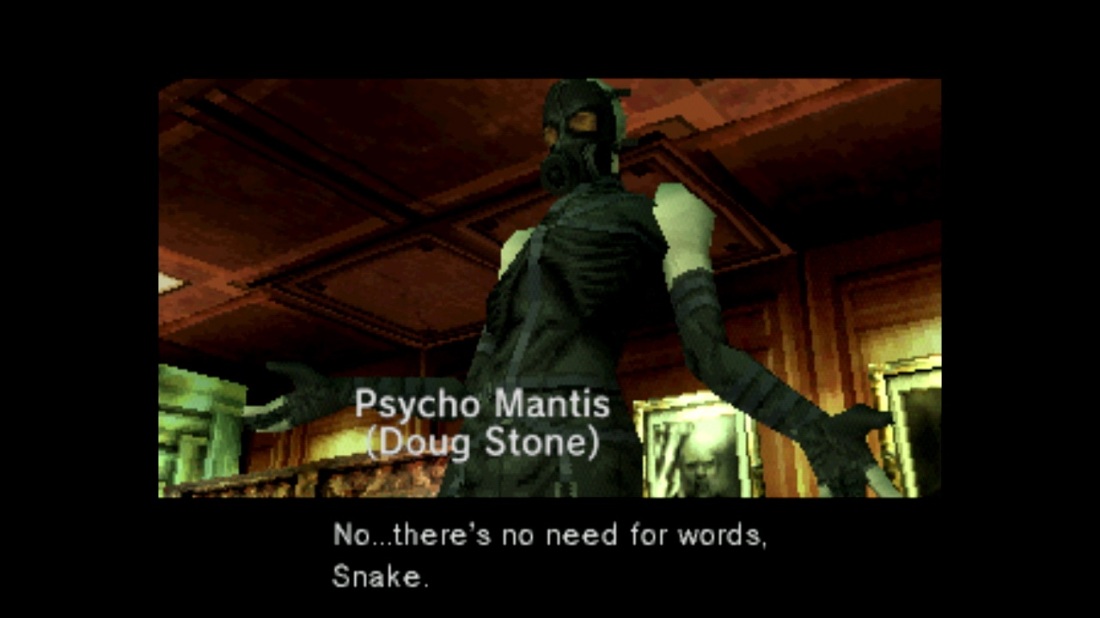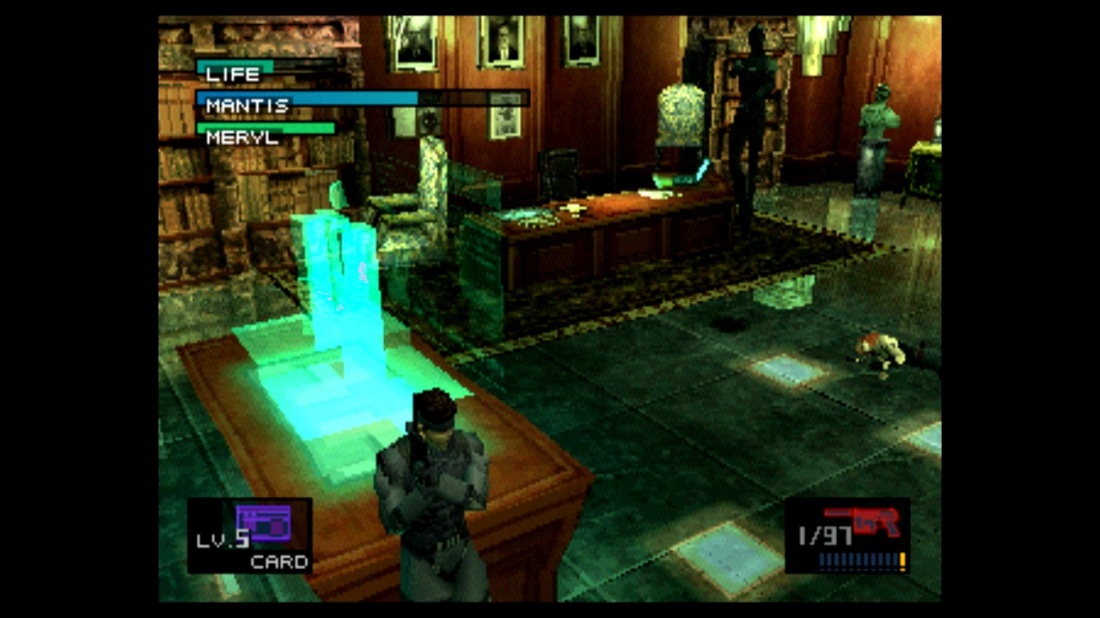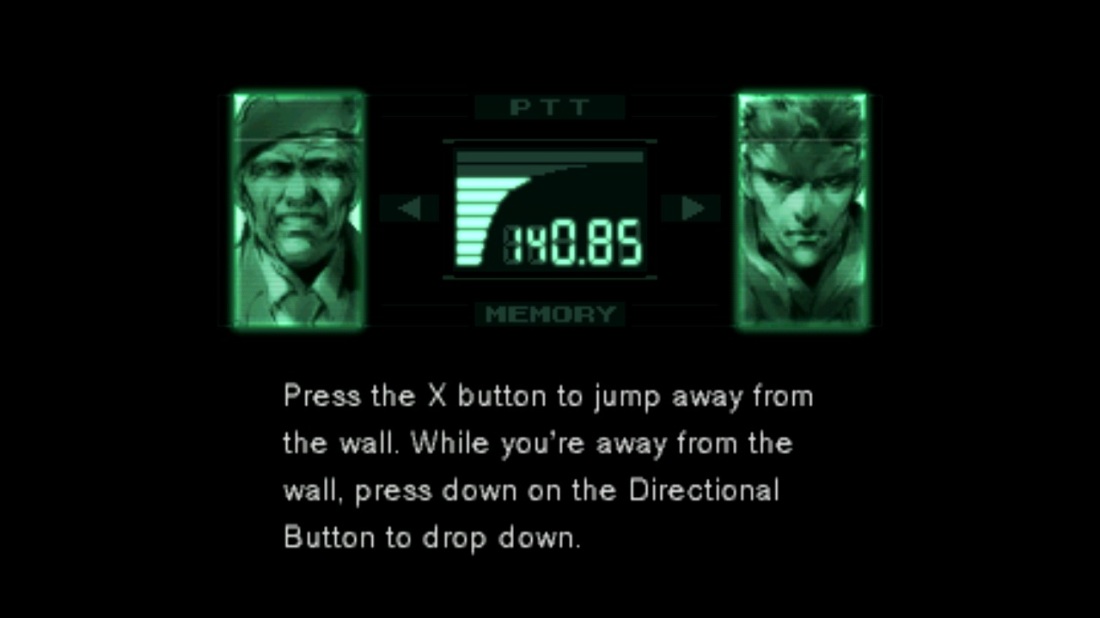I can vividly remember tearing through issues of Gamepro and Electronic Gaming Monthly back in 1998 trying to piece together just what this crazy looking game, Metal Gear Solid, was going to be. The images were unlike anything I’d seen before, and the idea of a stealth game seemed like an extremely foreign concept to me. After months of waiting breathlessly, I was thrilled to finally dive in on the day that my pre-ordered copy arrived at the local Babbage’s at last. Over the ensuing months, I didn’t just play the game; I devoured it – running through it four times in fairly quick succession until I had every last nook, cranny, and terrorist deeply implanted into my brain. The promises of those magazine articles had come to fruition, and everything from the crazy uses of the camera to the seemingly endless cinematics, heavy mature rating, and meta-nature of it all felt absolutely revolutionary to my 13-year-old self.
Despite my adoration of this game, I fell away from the series and hadn’t played any of the entries since briefly trying out 2001’s Metal Gear Solid 2. After reveling in the latest world created by Metal Gear mastermind, Hideo Kojima, with last year’s Death Stranding, I decided it was time to revisit one of my childhood favorites. To my surprise and delight, I found that the Playstation One boundary smashing adventures of Solid Snake felt just as groundbreaking as ever 22 years later.

Trying to fully comprehend how much this game must have blown my young mind was a fun exercise throughout. Instantly, it announces itself as something entirely different from everything that came before it with a movie-like opening worthy of a James Bond adventure. The cutscenes never relent, and you can clearly see the vision of notorious lengthy cinematic lover Kojima taking shape. Whereas other games of the era may have had a short 30 second cutscene here and there, Metal Gear Solid, was positively teeming with scenes featuring full voiceover that routinely topped 5 minutes and that definitely were what forced the game to take up 2 whole CDs.
While the inclusion of five million cutscenes made for a cinematic experience in gaming like no other, the creative “freedom” given to the camera truly set MGS apart. The majority of the action takes place in an overhead view that, if not for an excellent radar, would be somewhat stifling, forcing you to frequently switch to first-person view (I cannot remember another game of the 32-bit era that allowed such a thing) or to do the peak around the corner to get the drop on an enemy move. This was, in essence, the first ever major cover based game, and that stickiness to surfaces and accompanying camera shift are likely the defining image that comes to mind for most fans and still made me feel a little giddy every time I triggered it.

All of this camera fanciness is in service of the game’s strict adherence to stealth. Enemies have vision cones and can even hear you if you walk across the wrong surfaces, causing them to sound the alarm and jam your radar. Sure, it seems pretty much every terrorist is in bad need of glasses, which is probably why their plot failed, but the fact that there was a visual representation of their line of sight felt insanely detailed and made them all the more lifelike and menacing. Whereas pretty much every game up until that point had rewarded you for going in guns blazing, MGS required you to sneak around and often made it more rewarding to get through an area completely unseen, even if you had to use an overpowered cardboard box.

Fortunately, a rectangular piece of cardboard isn’t the only item at your disposal to help prevent a nuclear launch. Snake has access to some of the most sophisticated and hi-tech military gear around adding an element of realism to the proceedings. Are there infrared laser traps nearby? Well, then you better use smoke from your cigarettes or thermal goggles to find where they are and avoid certain death. Is there a sniper taking shots at you from an unknown location? Then surely you’ll have a better chance of emerging victorious from the battle of marksmanship if you take some diazepam to calm your nerves and steady your aim (and then hopefully don’t develop a crippling addiction like you would in real life). Hell even extreme cold or extreme heat can affect your inventory like freezing your rations preventing you from healing. This level of detail in an inventory might seem quaint today, but it blew the walls of of everything that came before it.

Mastery of your ever-expanding inventory is key to surviving the game’s numerous boss battles that not only upped the scope of epic-ness felt by the player but also established a template that games like Resident Evil 4 would build upon years later. The game itself can be thought of as a series of challenge rooms broken up by a myriad of boss encounters each featuring their own unique weaknesses and weapon requirements. Things start “simple” enough with a battle against a sword-wielding invisible suit wearing ninja, but by the end of the game you’ll have taken down helicopters, mechs, and raven obsessed gatling gun wielding giants. The most memorable of the bosses, however, comes about midway through the game in the form of the world-breaking telekinetic fiend Psycho Mantis.

Anyone who has played Metal Gear Solid can tell you exactly what it was like the first time the encountered the mind freaking brought on by Psycho Mantis. The battle begins with him telling you about your playstyle and reading your memory card to point out other Konami titles you’ve played (a feature that is sadly not possible to replicate on the Playstation Classic console). Once the fighting begins, you’re further freaked out by the fact that any attempts to attack him prove futile as he wasn’t lying about being able to “read your mind”. That is unless you plug the controller into the second port for this world’s equivalent of wearing a tin foil hat.

Nowadays the idea of being meta seems almost like a tired trope (he said upon his 4th rewatch of Community), but at the time it was unheard of. The mind reading of Psycho Mantis is the most memorable of countless examples that also include being told that you can find someone’s Codec frequency on the game’s box (which sadly meant on the internet now) or the wide range of tutorials given to you over the codec at a time when games weren’t complicated enough to typically require anything but reading the user manual first.

These interstitial bits of meta-ness are just part of the overly complex narrative being weaved throughout. Previously, convoluted stories were seemingly reserved for JRPGs like Final Fantasy VII, but here we had that over-the-top storytelling in an action game that usually never got more elaborate than “There are zombies created by an evil corporation, and you need to shoot them to escape”. The story takes more turns than the average summer blockbuster featuring multiple people faking their identities, a government conspiracy involving a virus that does indeed go all the way to the top, and a somewhat heavy-handed commentary on the dangers of nuclear weapons. It must’ve felt like drinking from a fire hose to my 13-year-old brain. Truthfully, I even still had trouble keeping track of it all at 35, but there was no doubting that this was introducing an entirely new way of storytelling to the medium that has clearly been perfected leading up to the global warming allegory of Death Stranding.

In that storytelling we also find the final piece of what made this game feel so revolutionary at the time. It’s told in a manner that seems to be the hardest “Mature” rating I can recall from the PSOne. You’re not just blowing through hordes of mindless zombies or monsters but rather actual people, and the violence feels far more intense as a result. People don’t just die, there are instances of virus-induced heart attacks (that are part of why the Dualshock controller caught on so well), multiple limbs cut off, an entire torture sequence, Snake living up to his name and trying to hit on every woman he meets (no seriously), and a level of blurred nudity/urinating that I recall made me feel like I was playing something forbidden.
The fact that my 10 hours journeying through the Alaskan wilderness with Solid Snake felt just as revolutionary two decades later truly is a testament to the genius and vision of Hideo Kojima and an odd bit of reassurance that I didn’t waste my money buying the derided Playstation Classic. It absolutely baffled my mind throughout that all of this somehow worked on the original Playstation as it feels lightyears ahead of the typical rough polygonal adventures from the Clinton-era, and I felt just as entranced playing it now as I was when learning about the game’s existence in those magazines so long ago. It’s a shame there isn’t a remaster of the other titles in the series on the current-gen, though, because I’d love nothing more than to finally see just how weird and complicated it all gets.

2 thoughts on “Reliving the Revolution With Metal Gear Solid”